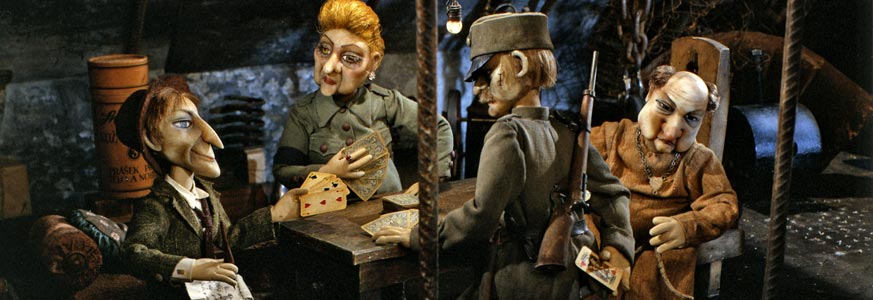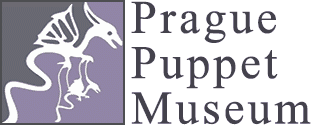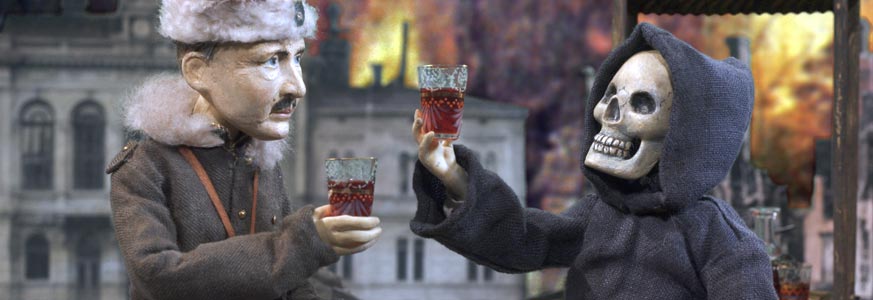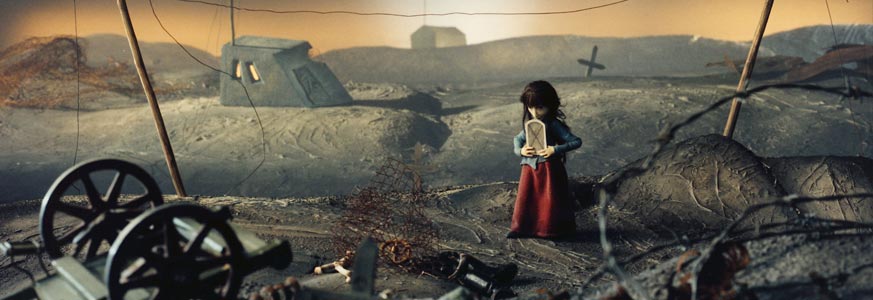Three decades of animation and other artistic cooperation between Czech and Finland.

Independent film and art production company Cagliostro was founded in 1992 in Prague by Finnish-born director Katariina Lillqvist. Later it converted into the form of cooperative and was registered also in Tampere, Finland, on 1999. Since then Cagliostro has grown into a medium-sized, international production house with coproducers in six EU countries. The company philosophy of Cagliostro is strongly based on multicultural thesis. Stories raising from Roma communities, from Northern minority nations as well as from various refugee subcultures are all included in Cagliostro´s biography during the years, and it has also produced the first puppet animation with Kurdish voice-over, ” Faruza” in 2013.
The name of Cagliostro is a hommage to late Finnish painter and sculptor Juhani Harri who described the life of mysterious Count Cagliostro in his dark and surrealistic works.
Currently Cagliostro has it´s own animation studio in Mikulandska street of Prague, and hosts the Museum of Puppet Art in the same house. It works in close cooperation with the Scandinavian Art Recidency of Mikulandska, operated by RosenbergPress.
The Technology of Puppet Films and Stop Motion
The basic term “animation” comes from the Latin combination of the words “animō” and “ātiō” -the act of bringing something into life. And stop motion, as the independent branch of the many-shaped animation tree, is an art form, which creates movement and shapes changes, making a physically manipulated object appear to move on its own in the silver screen.
In the animation studio, the objects or puppets are carefully moved step by step by the animator, meanwhile the camera is capturing the changes with 24 frames per minute, thus creating the illusion of movement when the series of frames are later played to the viewer as an continuous sequence.
Making of a single puppet film is a long process which needs time, resources and patience.
It takes four to five people to complete one puppet. First the mechanic, who often has skills of a goldsmith or a restorer, makes a metal skeleton. On the same time, the head-maker starts to sculpt the puppet head from the ceramic material. Then the costumer makes clothes, latex master the hands, wig-maker the wigs and finally in comes the painter, giving the final touch to the character.
Meanwhile scenographers are drawing sketches for the sets and props, and after those are accepted, starts the concrete work of film carpenters, prop makers and decoration painters.
When all sets, props and fonds as well as the puppets are ready, it is time to start the shootings. Director works together with photographer, animator and other crew in the dark studio room, producing only some ten seconds of material per day, if everything goes well. During the bad days lamps get broken, puppet drops his hand or breaks it´s nose, and you have to start from the zero again, frame by frame, second by second. But that is part of the magic!


